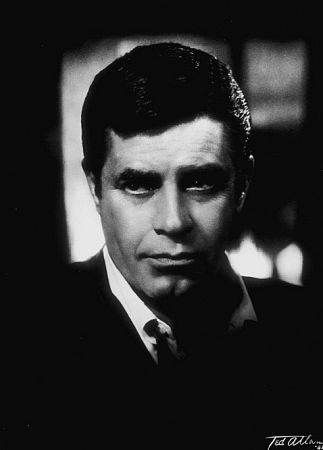|
Jerry Lewis
Scroll down for movie list.
Spouse
SanDee Pitnick (1983 - present) 1 adopted daughter
Patti Palmer (1944 - October 1982) (divorced) 5 sons 1 adopted son
Biography from Leonard Maltin's Movie Encyclopedia:
It's impossible to overstate the impact with which Jerry Lewis and partner Dean Martin burst onto the show business scene in the late 1940s and early 1950s. They were, to put it mildly, a phenomenon. No mere straightman-and-cutup duo, they convulsed audiences in nightclubs, theaters, and on television by fooling around-in a uniquely manic way. Signed by producer Hal Wallis in 1949, they made their debut as comedy relief in My Friend Irma and appeared in the sequel, My Friend Irma Goes West (1950) as well. After that, they took a back seat to no one. Unfortunately, their movie vehicles boxed the team into conventional formats, with Jerry as an overgrown juvenile and Dean as his perpetual friend/nemesis who would burst into song. Many of the films were very funny indeed, but they seldom captured the lunacy of a live Martin and Lewis performance.
What they did do was showcase Lewis' great comic gifts. His silly appearance in drag in At War with the Army (1950), his prizefighting routine in Sailor Beware (1951), his comic conducting of a chorus in both Sailor Beware and You're Never Too Young (1955), his comic-book dreams in Artists and Models (also 1955), his imitations of moviegoers around the world in the prologue of Hollywood or Bust (1956) were Jerry in top form. The team fared particularly well in remakes of solid movie vehicles of the past: You're Never Too Young was a retread of The Major and the Minor and Living It Up (1954), one of their best, was a remake of Nothing Sacred Lewis' desire to do something more than mug was evident early on, in the pathos of That's My Boy (1951) and The Stooge (1953, a show-biz saga about a team's volatile relationship that had at least a few parallels to the Martin and Lewis saga).
Martin and Lewis stayed togetherthrough occasional rifts-for ten years, then split. Jerry's first solo film, The Delicate Delinquent (1957), proved he could succeed on his own, maintaining the same basic character he'd played all along. Hit after hit followed: The Sad Sack (1957), Rock-a-Bye Baby, The Geisha Boy (both 1958), Don't Give Up the Ship (1959). His films were guaranteed moneymakers for Paramount, so when, in 1960, there was no Jerry Lewis film in the pipeline for Christmastime release, he determined to make a movie by himself in barely a month's time. The result was The Bellboy (1960), a series of blackout gags filmed in and around the Fontainbleau Hotel in Miami, Florida. It marked Lewis' first time as director and cowriter as well as star, and changed the course of his career.
Thereafter he alternated between selfmade films and star vehicles directed by others (usually his mentor, former cartoon director Frank Tashlin). The French critics-and public-came to revere Lewis during this period, and hailed The Nutty Professor (1963), a comic Jekyll and Hyde story, as his masterpiece. Less charitable viewers came to feel that Jerry's own films were suffering from an ever-increasing dose of ego-and fewer laughs-than before. By the end of the 1960s, the magic spell was broken, and Lewis movies were no longer box-office gold.
Having dabbled in television before (with Dean on "The Colgate Comedy Hour" and their own "Dean Martin & Jerry Lewis Show," and in variety specials of his own), he now made history with an unprecedented live, two-hour Saturday night talk-and-variety program in 1963. Lewis originally wanted to direct the show himself from a console at his desk, but was talked out of it at the last minute. His ego could not be contained on the air, however, and the show was a colossal fiasco. Audience exposure to the "real" Jerry Lewis may have played a part in their disillusionment with "That Kid" (as he called himself) onscreen, and the erosion of his box-office potency.
After the excruciating Which Way to the Front? (1970) he was off-screen for more than a decade, though he did direct his friend Sammy Davis, Jr., in the buddy comedy One More Time (1970) with Peter Lawford. Lewis remained in the public eye on a somewhat conventional variety show ("The Jerry Lewis Show," 1967-69) and on his hugely successful annual telethon benefiting the Muscular Dystrophy Association.
The 1980s saw a Jerry Lewis renaissance, however. He made some new movies, including the one-man-show Hardly Working (1981) and the hardly released Cracking Up (1983, aka Smorgasbord Then he performed brilliantly for Martin Scorsese as a somber TV talk-show host idolized and victimized by an obsessed fan (Robert De Niro) in The King of Comedy (1983). This led to prominent TV guest shots and offers to play semidramatic parts, including a multi-episode story on TV's "Wiseguy" (1988-89), in which he did himself proud as a self-made garment center mogul. He played himself in an amusing cameo for Billy Crystal's Mr. Saturday Night (1992), and gave impressive "straight" performances in Arizona Dream (1995, filmed in 1991) and Funny Bones (1995). He then made his Broadway debut in a revival of "Damn Yankees" (as the Devil). He also produced a series of cable-TV specials culled from his library of TV kinescopes, which reminded people just how funny he could be. |  |










